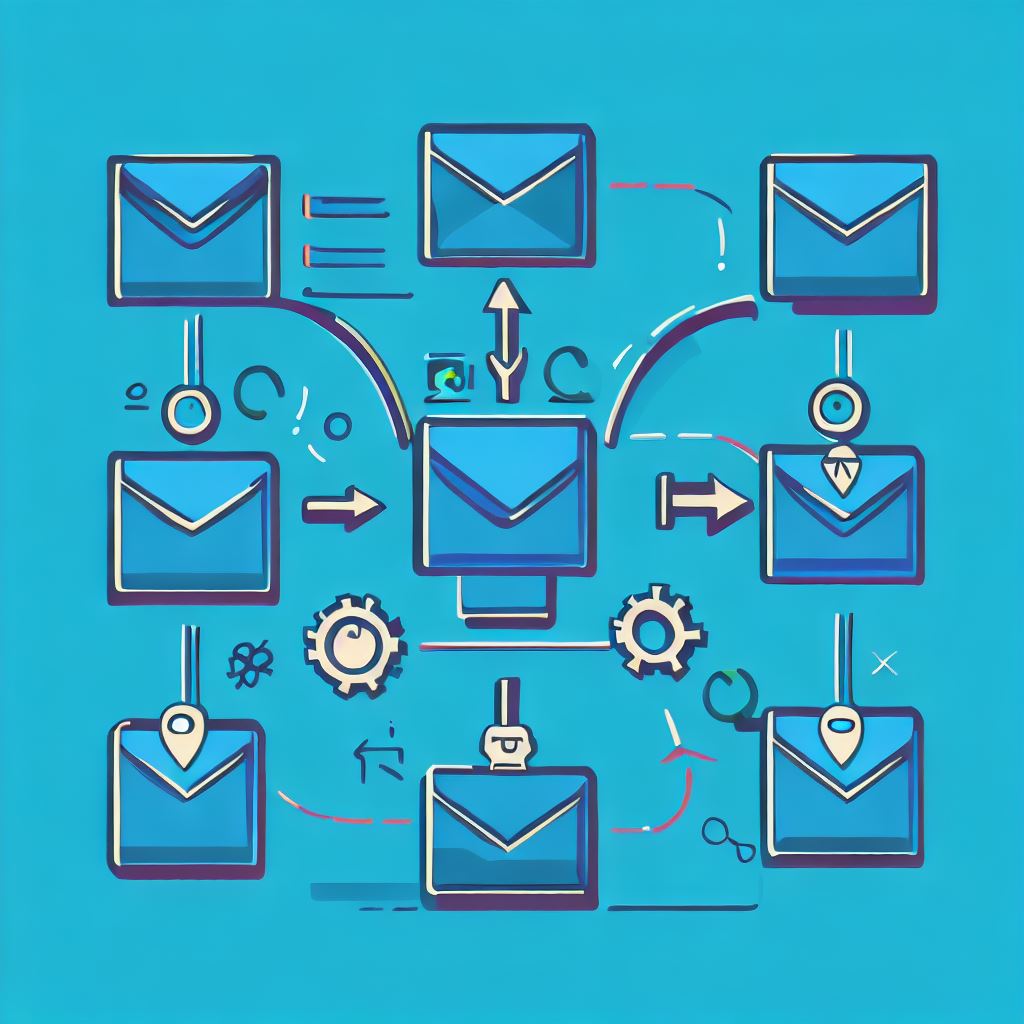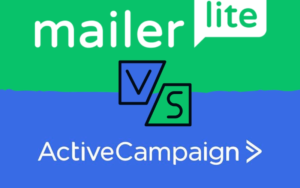We may earn money from the companies mentioned in this post. Your purchase won't cost you any extra, but it helps support the content and upkeep of this website. Thank you!
Email marketing automation is a powerful tool for businesses looking to optimize their email campaigns. It allows marketers to send targeted, personalized messages to subscribers based on their behavior, interests, and preferences. By automating the email marketing process, businesses can save time, increase efficiency, and improve ROI.
Understanding email marketing automation is key to making the most of this powerful tool. Email automation involves setting up a series of triggered emails that are sent to subscribers based on specific actions or events. These emails can be designed to nurture leads, welcome new subscribers, promote products or services, and much more. By sending the right message to the right person at the right time, businesses can build stronger relationships with their subscribers and increase the likelihood of conversions.
To get the most out of email marketing automation, it’s important to follow best practices. These include choosing the right email marketing automation tool, segmenting your email list, personalizing your messages, and tracking and analyzing your results. By following these best practices, businesses can create effective email campaigns that engage and convert their subscribers.
Table of Contents
Key Takeaways
- Understanding email marketing automation is key to making the most of this powerful tool.
- Following best practices such as choosing the right email marketing automation tool and personalizing your messages can help businesses create effective email campaigns.
- Tracking and analyzing your results is crucial for measuring success and making improvements to your email marketing automation strategy.
Understanding Email Marketing Automation
Email marketing automation is the use of software to automate email marketing tasks. It involves sending targeted and personalized emails to subscribers based on specific triggers and actions. With email marketing automation, businesses can save time and resources while still delivering relevant and timely messages to their subscribers.
Marketing automation is a growing trend in the marketing industry, and email marketing automation is at the forefront. It allows businesses to send personalized emails to their subscribers at the right time, which can lead to increased engagement, conversions, and revenue.
Email marketing automation involves using artificial intelligence (AI) and machine learning to analyze subscriber behavior and preferences. This allows businesses to send targeted emails that are more likely to be opened and clicked.
Some common email marketing automation triggers include:
- Welcome emails
- Abandoned cart emails
- Birthday or anniversary emails
- Re-engagement emails
- Post-purchase follow-up emails
Email marketing automation can also be used to segment subscribers based on their behavior and preferences. This allows businesses to send more targeted emails that are more likely to be relevant and useful to the subscriber.
Overall, email marketing automation is a powerful tool for businesses looking to improve their email marketing efforts. It allows businesses to send targeted and personalized emails to their subscribers, which can lead to increased engagement, conversions, and revenue.

Why Email Marketing Automation Matters
Email marketing automation is a powerful tool that can help businesses of all sizes improve their marketing efforts. By automating various aspects of email campaigns, companies can save time and money while also increasing their engagement with customers and leads.
One of the primary benefits of email marketing automation is that it allows businesses to send targeted messages at the right time. With automation, companies can set up campaigns that trigger based on specific actions taken by subscribers, such as signing up for a newsletter or making a purchase. This means that subscribers receive messages that are relevant to their interests and needs, which can increase their engagement with the brand.
Another benefit of email marketing automation is that it can help businesses improve their customer experience. By sending personalized messages that are tailored to each subscriber’s interests and needs, companies can create a more positive and engaging experience for their customers. This can lead to increased satisfaction, loyalty, and ultimately, sales.
Email marketing automation can also help businesses save time and money. By automating various aspects of email campaigns, such as list segmentation and message scheduling, companies can free up staff time to focus on other important tasks. Additionally, automation can help reduce the likelihood of errors or mistakes, which can save businesses money in the long run.
Finally, email marketing automation can help businesses achieve their goals, whether that’s increasing awareness, generating leads, or driving sales. By tracking key metrics such as open rates, click-through rates, and conversions, companies can measure the effectiveness of their campaigns and make adjustments as needed to achieve their desired outcomes.
Overall, email marketing automation is a valuable tool for businesses looking to improve their marketing efforts. By using automation to send targeted, personalized messages at the right time, companies can improve their engagement with customers and leads, save time and money, and achieve their goals more effectively.

Best Practices for Email Marketing Automation
Email marketing automation has become an essential tool for marketers to engage with their audience and drive revenue. However, to ensure success, it is crucial to follow best practices that can help achieve the desired results. Here are some best practices for email marketing automation:
1. Define Automated Email Workflows
Automated email workflows are a series of messages triggered by a specific action or behavior of the subscriber. Defining the automated email workflows is essential to ensure that the message is delivered at the right time and to the right person. Marketers can create automated workflows for various actions such as sign-ups, abandoned carts, and lead nurturing.
2. Personalize the Message
Personalization is a crucial aspect of email marketing automation. Marketers can use the subscriber’s behavior, preferences, and demographics to personalize the message. Personalized emails have a higher open rate and click-through rate than generic messages.
3. Segment the Email List
Segmentation is the process of dividing the email list into smaller groups based on specific criteria. This can help deliver targeted messages to the subscribers, leading to higher engagement and conversion rates. Marketers can segment the email list based on demographics, behavior, and interests.
4. Optimize the Subject Line and CTA
The subject line and call-to-action (CTA) are critical elements of an email campaign. The subject line should be concise and compelling, while the CTA should be clear and visible. Marketers can use A/B testing to optimize the subject line and CTA.
5. Use Engaging Design and Content
The design and content of the email can significantly impact the engagement rate. Marketers should use engaging design and content that aligns with the brand’s message. The email should be visually appealing and easy to read. Including videos and social proof can also increase engagement.
6. Monitor and Analyze the Metrics
Monitoring and analyzing the metrics is crucial to understand the effectiveness of the email marketing automation campaign. Marketers can track metrics such as open rate, click-through rate, engagement rate, and conversion rate. This can help identify areas for improvement and optimize the campaign.
In conclusion, following best practices for email marketing automation can help marketers achieve their desired results. By defining automated email workflows, personalizing the message, segmenting the email list, optimizing the subject line and CTA, using engaging design and content, and monitoring and analyzing the metrics, marketers can drive engagement and revenue.
Choosing the Right Email Marketing Automation Tool
Selecting the right email marketing automation tool can be a daunting task. There are several email automation software on the market today, each with its own unique features and pricing models. The key is selecting the best option for your business and goals.
When considering an email marketing automation tool, there are a few factors to keep in mind:
Features
It’s important to evaluate the features of each email automation tool to determine which one is the best fit for your business. Some features to look for include a drag-and-drop email builder, A/B testing and analytics, email deliverability and spam prevention, dynamic content, and personalization.

Integration
It’s essential to ensure that the email automation tool integrates seamlessly with your existing marketing stack. This includes your CRM, social media, and other marketing tools. The ability to integrate with other tools will help you create a more cohesive marketing strategy.
Pricing
Pricing is an important consideration when selecting an email automation tool. Some tools charge a flat fee, while others have a tiered pricing model based on the number of contacts or emails sent. It’s important to evaluate the pricing structure of each tool to determine which one fits within your budget.
Support
It’s important to have access to support when using an email automation tool. Look for tools that offer comprehensive support, including phone, email, and chat support. Additionally, some tools offer resources such as knowledge bases, video tutorials, and webinars to help you get the most out of the tool.
Some popular email automation tools include:
- Mailchimp
- Campaign Monitor
- MailerLite
- HubSpot
- ConvertKit
- ActiveCampaign
Each of these tools has its own unique features and pricing models, so it’s important to evaluate each one to determine which one is the best fit for your business.
In addition to these popular tools, there are also AI-powered email marketing automation tools that use machine learning algorithms to optimize email campaigns. These tools can help you create more personalized and effective email campaigns.
Overall, selecting the right email marketing automation tool requires careful consideration of your business needs and goals. By evaluating the features, integration, pricing, and support of each tool, you can select the best option for your business.
Measuring Success in Email Marketing Automation
Measuring the success of email marketing automation is crucial for any business to evaluate the effectiveness of their email campaign. By tracking the right metrics, businesses can identify areas of improvement and refine their email marketing strategy to achieve better results.
Key Metrics to Track
Here are some key metrics that businesses should track to measure the success of their email marketing automation:
- Open Rate: The percentage of recipients who opened the email.
- Click-Through Rate (CTR): The percentage of recipients who clicked on a link in the email.
- Engagement Rate: The percentage of recipients who engaged with the email (opens, clicks, etc.).
- Conversion Rate: The percentage of recipients who completed a desired action (e.g., made a purchase) after clicking on a link in the email.
- ROI: The return on investment from the email campaign.
- Revenue: The total revenue generated from the email campaign.
Analytics Tools
To track these metrics effectively, businesses can use analytics tools like Google Analytics, which provides insights into website traffic and user behavior. By integrating email marketing automation with Google Analytics, businesses can track the performance of their email campaigns and measure the impact on website traffic and conversions.
A/B Testing
Another way to measure the success of email marketing automation is through A/B testing. This involves sending two versions of an email to a small sample of recipients and measuring which version performs better. By testing different subject lines, content, and calls-to-action, businesses can identify the most effective elements of their email campaigns and refine their strategy accordingly.

Conclusion
Measuring the success of email marketing automation is essential for businesses to optimize their email campaigns and achieve better results. By tracking key metrics, using analytics tools, and conducting A/B testing, businesses can identify areas of improvement and refine their email marketing strategy to increase engagement, conversions, and revenue.
Common Mistakes in Email Marketing Automation and How to Avoid Them
Email marketing automation has revolutionized the way marketers communicate with their audiences. However, it’s not without its challenges. Here are some common mistakes to avoid when implementing email marketing automation:
Dirty Data
Dirty data is one of the biggest challenges that marketers face when it comes to email marketing automation. Inaccurate or outdated data can lead to ineffective campaigns, low engagement rates, and a waste of resources. To avoid this mistake, marketers should regularly clean their data and ensure that it’s up-to-date and accurate.
Lack of Segmentation
Segmentation is the key to effective email marketing automation. Without proper segmentation, marketers risk sending irrelevant messages to their subscribers, leading to low engagement rates and high unsubscribe rates. Marketers should segment their email lists based on demographics, behavior, preferences, and interests to ensure that they’re sending the right message to the right person at the right time.
Poor Email Design
Poor email design can lead to low engagement rates and high unsubscribe rates. Marketers should invest in creating visually appealing and engaging emails that are optimized for all devices. They should also ensure that their emails have a clear call-to-action and are easy to navigate.
Overuse of Automation
Overusing automation can lead to spammy and impersonal messages, which can damage a brand’s reputation. Marketers should use automation sparingly and ensure that their messages are personalized and relevant to their subscribers.
Lack of A/B Testing
A/B testing is an essential part of email marketing automation. Marketers should test their subject lines, email copy, and call-to-action to determine what resonates best with their audience. This can help improve engagement rates and conversion rates over time.
Ignoring Engagement Metrics
Engagement metrics such as open rates, click-through rates, and conversion rates are essential to understanding the effectiveness of email marketing automation campaigns. Marketers should regularly monitor these metrics and adjust their campaigns accordingly.
In conclusion, email marketing automation is a powerful tool for marketers, but it’s not without its challenges. By avoiding these common mistakes, marketers can create effective and engaging campaigns that drive results.
Conclusion
In conclusion, email marketing automation is a powerful tool that can help businesses of all sizes improve their marketing efforts. By automating email campaigns, businesses can save time, reduce errors, and increase their email personalization.
To succeed with email marketing automation, it is important to understand your audience and craft engaging content. Utilizing automation tools can help streamline the process and improve conversion rates.
Some best practices for successful email marketing automation include segmenting your audience, personalizing your emails, and testing and analyzing your campaigns. It is also important to ensure that your emails are mobile-friendly and comply with anti-spam laws.
By following these best practices, businesses can simplify and succeed in the complexities of modern email marketing. Email marketing automation can be a game-changing solution that empowers businesses to connect with their audience effectively and efficiently.
Frequently Asked Questions
What are some effective measures for email marketing automation?
Effective email marketing automation measures include segmenting your email list, personalizing your emails, and automating drip campaigns. By segmenting your email list, you can send targeted emails to specific groups of subscribers, increasing the relevance of your emails and improving engagement rates. Personalizing your emails with the recipient’s name or other relevant information can also improve engagement rates. Automating drip campaigns can help you nurture leads over time, sending a series of emails to subscribers based on their behavior or interests.
How can CRM and marketing automation platforms improve email marketing?
Integrating a CRM or marketing automation platform with your email marketing efforts can improve your ability to target and engage with subscribers. By tracking subscriber behavior and interests, you can send more relevant and personalized emails, improving engagement rates and ultimately driving more conversions. These platforms can also automate the process of sending emails, saving time and resources.
What are some examples of successful email automation flowcharts?
Successful email automation flowcharts include welcome series, abandoned cart emails, and re-engagement campaigns. A welcome series is a series of emails sent to new subscribers, introducing them to your brand and encouraging them to engage with your content. Abandoned cart emails are sent to subscribers who have added items to their cart but haven’t completed the purchase, reminding them to complete the transaction. Re-engagement campaigns are sent to subscribers who haven’t engaged with your emails in a while, encouraging them to re-engage with your brand.
What are the benefits of using HubSpot for automated emails?
HubSpot offers a range of benefits for automated emails, including advanced segmentation and personalization capabilities, easy integration with other marketing tools, and detailed analytics and reporting. HubSpot also offers a user-friendly interface and a range of templates and tools to help you create effective automated email campaigns.
What are some types of marketing automation tools that can be used for email campaigns?
There are many types of marketing automation tools that can be used for email campaigns, including email marketing platforms, CRM systems, and marketing automation platforms. Email marketing platforms are designed specifically for email campaigns, offering features like list management, email templates, and analytics. CRM systems can help you track customer behavior and interests, allowing you to send more targeted and personalized emails. Marketing automation platforms offer a range of features, including email marketing, lead scoring, and social media management.
What are some sales automation tools that can be integrated with email marketing?
Sales automation tools that can be integrated with email marketing include customer relationship management (CRM) systems, sales outreach platforms, and lead generation tools. CRM systems can help you track customer behavior and interests, allowing you to send more targeted and personalized emails. Sales outreach platforms can help you automate the process of reaching out to leads, sending personalized emails at scale. Lead generation tools can help you identify and target high-quality leads, improving the effectiveness of your email marketing campaigns.




